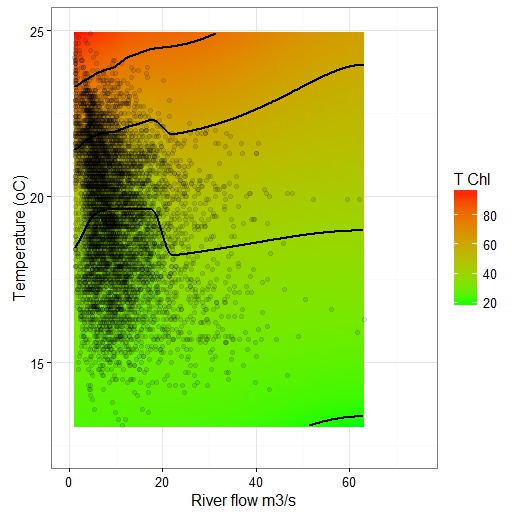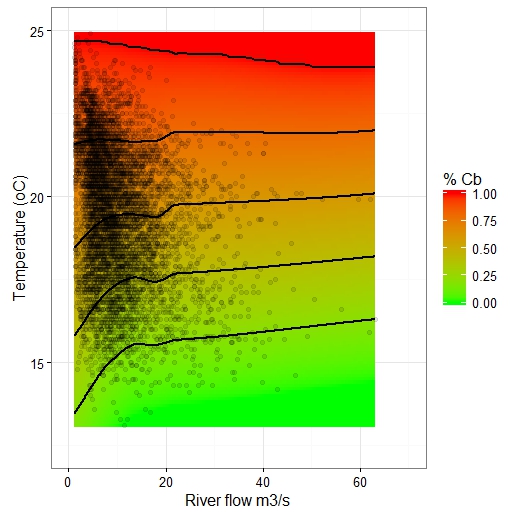Key science outputs
- Reservoir chlorophyll concentration
- Reservoir Cyanobacteria concentration
Introduction
Algal blooms in reservoirs are a potentially serious problem for water quality. Certain types, such as cyanobacteria (“blue-green algae”), have the potential to produce harmful toxins.
Research methods
An algal community model (PROTECH) was applied to simulate the algae of a reservoir under numerous scenarios. The occurrence of blooms and cyanobacteria abundance was quantified.
Result 1
Predicting the total chlorophyll concentration in reservoir over a range of Thames River flows and reservoir surface water temperatures over the period of June-September (the main growing season).

Result 2
Predicting the proportion of cyanobacteria (“blue-green algae”) in reservoir over a range of Thames River flows and reservoir surface water temperatures over the period of June-September (the main growing season).


